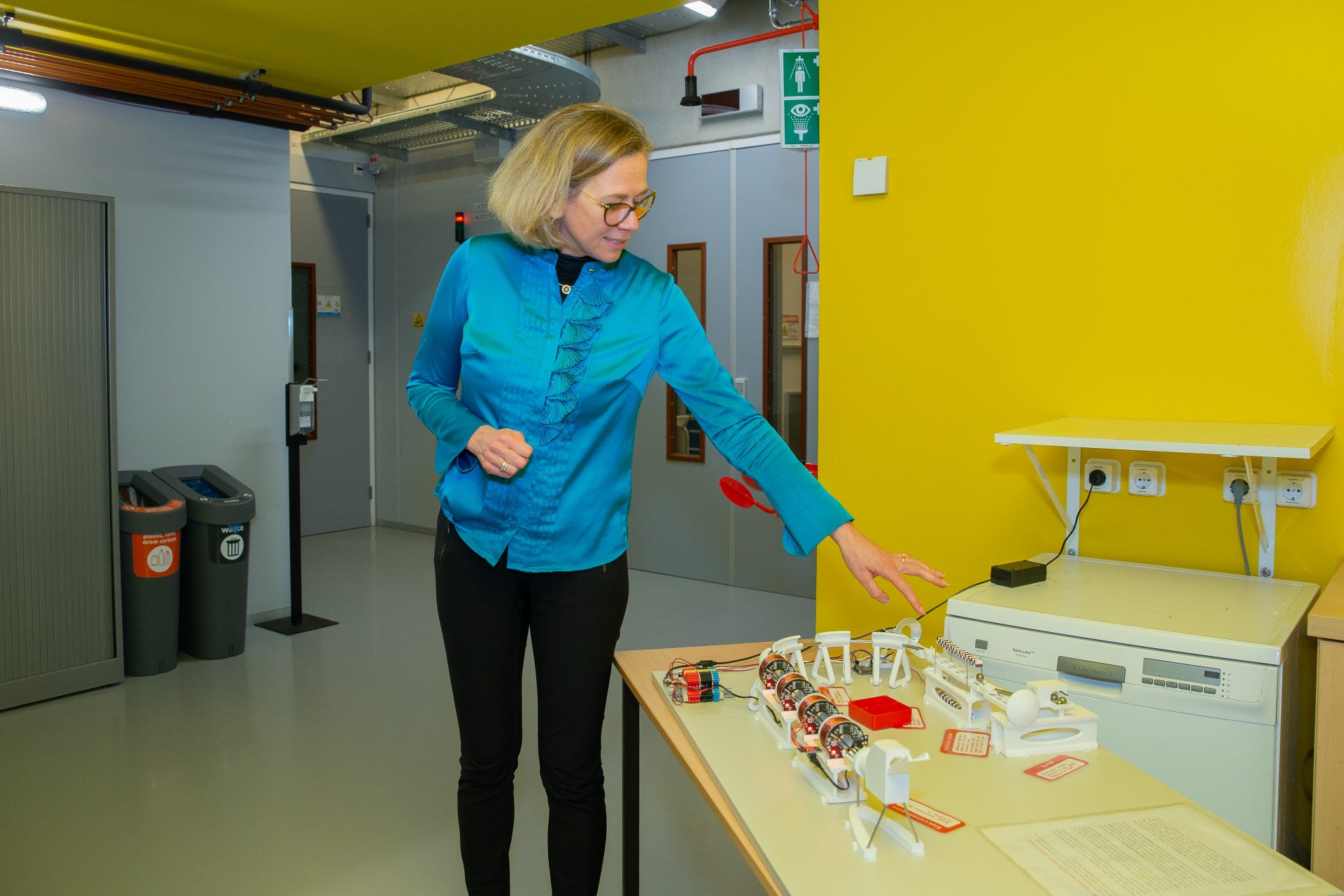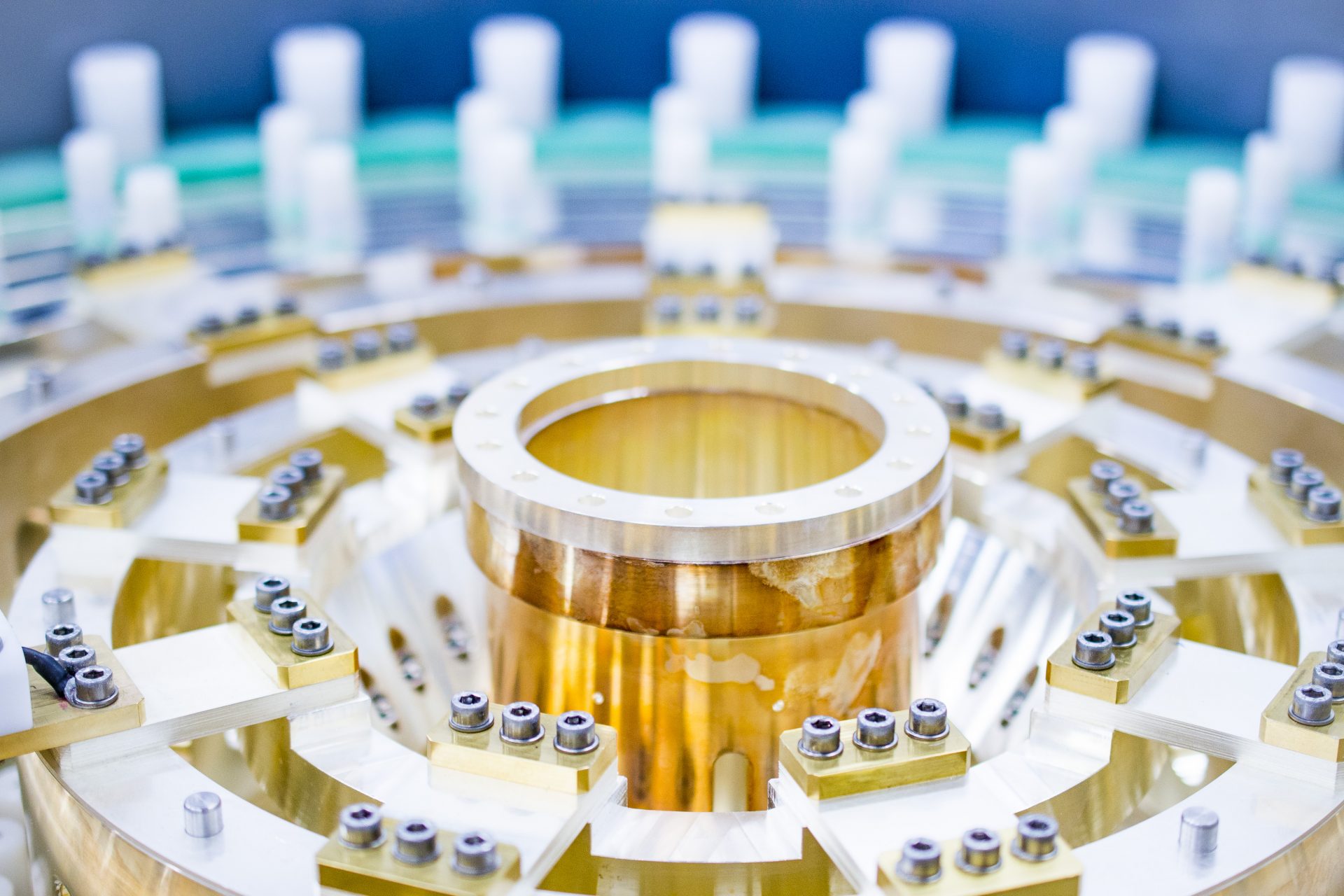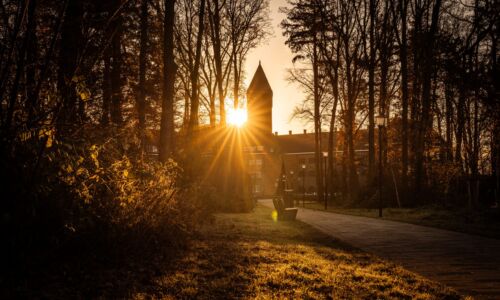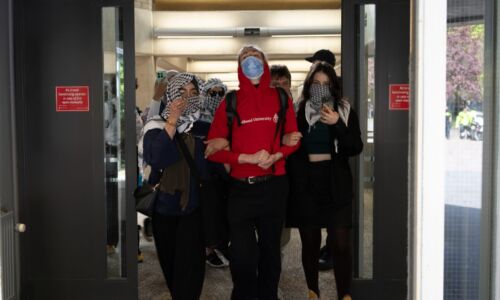Behind the scenes at HFML-FELIX: ‘How much do you remember from your science lessons?’
-
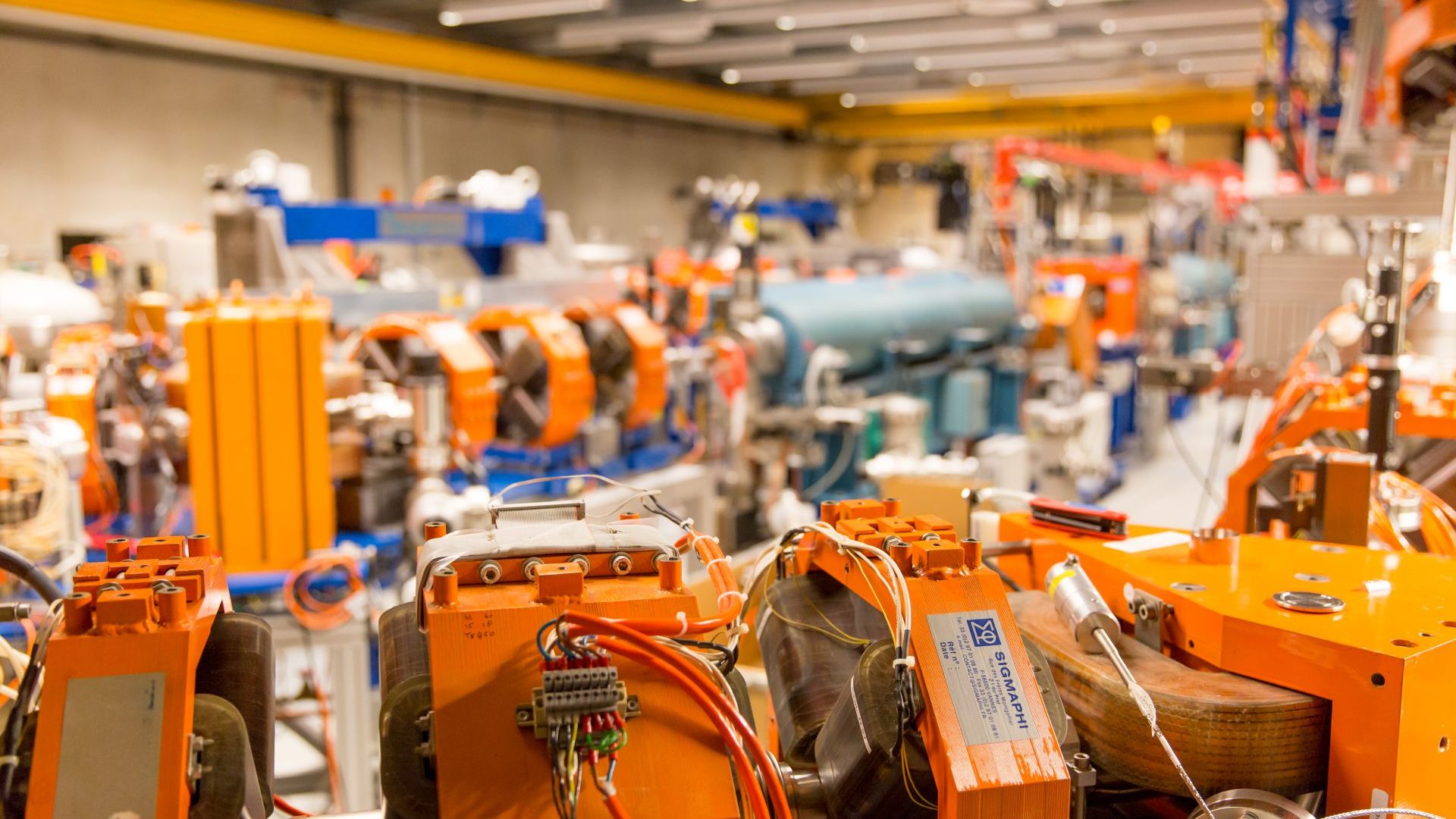 Foto: Joeri Borst
Foto: Joeri Borst
The Nijmegen magnets- and lasers HFML-FELIX lab is presently in murky financial waters. But what kind of research do they do? And how does it benefit society? Vox was granted a two-hour tour of the prestigious lab. ‘Are you still keeping up?’
Molecular clouds, powerful lasers, and the former strongest magnet in the world: our in-depth tour of the magnetics- and laser lab HFML-FELIX includes all of these. The futuristic-looking lab behind the Huygens building employs several PhD candidates, post-docs, and scientists from around the world, all of whom are engaged in fundamental- and applied research.
The reason for the tour is an article on the lab’s financial woes, which was published by Vox in early February. Two year-long contracts between the lab and the Dutch research council NWO expired recently, while negotiations about a follow-up are still ongoing. In the meantime, Radboud University is making up the difference, which is already running in the millions of euros. MP Lisa Westerveld recently asked parliamentary questions about the subject.
Before we commence the tour, HFML-FELIX director Britta Redlich informs us that there is no news regarding the negotiations with NWO. She states ‘We are confident that there will be a solution before the summer’.
‘From now on, morning shifts don’t start until 7 AM’
The financial uncertainty has led to another issue: a group of employees recently spoke with the FNV union representatives to discuss the high work pressure. In cooperation with management, steps have been taken to address the issue.
One of those steps, according to managing director Femke Tabak, is that the shifts during which the researchers can use the lab’s magnets have been adapted. ‘From now on, morning shifts don’t start at 5:30, but at 7 AM. Other measures will follow soon.’
Marbles
But: we’re here for the tour, which starts at the FELIX lasers. FELIX stands for Free-Electron Lasers for Infrared eXperiments. However, before we see the real four lasers, we are shown a scale model, made for an open day. Reportedly, it’s very popular with children, but our journalist and photographer can learn a thing or two as well.
‘Hoppa!’ Redlich throws a few marbles through the toy laser and explains how it works. The lasers use electrons that are sped up close to the speed of light. The electrons are sent through a magnetic structure, causing them to wobble and give off light; not just red or green light as in most laser pointers, but every possible colour. According to Redlich, the colour -or wavelength- of the light can easily be changed using FELIX lasers. In the end, they serve as power magnifying glasses that scientists can use to answer their research questions.
We follow Redlich through a secure door and find ourselves in a kind of underground bunker. Working with relativistic electrons releases radiation, hence the thick walls. However, Redlich assures us that Monday is maintenance day, which means no radiation: we’re safe.
The FELIX lab looks like a giant engine room and consists mainly of orange, blue and white wires and tubes that run the length of the space. The tubes which are connected to the lasers run through the ceiling to different floors. Mirrors in the tubes send the light to different rooms, where researchers can make use of it.
Molecular clouds
We leave the lasers behind and move on to the laser lab, where Sandra Brünken is waiting for us. The professor is researching molecules in the molecular clouds that birth stars and planets. Astrochemistry, her area of expertise, is a combination of molecular physics, astrophysics, and chemistry. She’s working on an experiment, between several monitors and pieces of equipment hooked up to the FELIX lasers.
According to Brünken, her research aims to simulate a small piece of space, to wit: interstellar- and molecular clouds. ‘Among other things, we’re studying how complex molecules are formed’, she says. ‘What structure do they have; how do they come together; how do they expand; what influence do they have on the formation of stars and planets?’ The FELIX lasers allow her to study molecules in minute detail, Brünken explains: by measuring the radiation, she can reconstruct their chemical fingerprints.
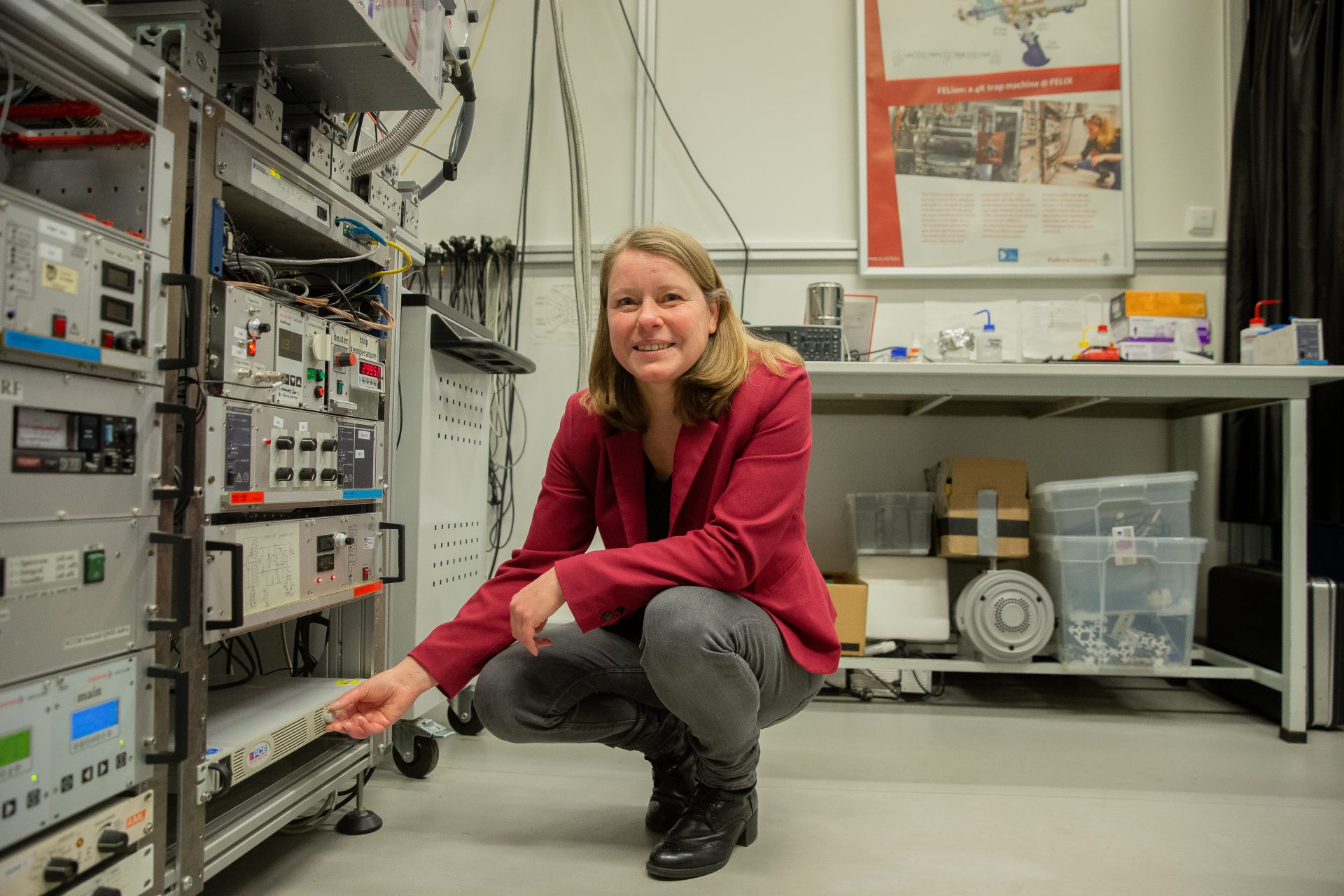
It’s hard to think of a follow-up question after Brünken’s crystal-clear explanation. Is the researcher chained to her desk during research, or does it involve a lot of turning dials? That depends on the research, as well as on the specific phase of the research, Brünken explains. ‘Sometimes we have to do a lot of tweaking; sometimes we’re behind the computer all day doing data analysis.’
Reciprocity
While Brünken is busy smiling for the camera, HFML-FELIX managing director Femke Tabak talks about the international researchers using the lab. They don’t have to pay for lab usage, provided that their academic research is made available to the public. The same goes for Dutch researchers at other European laboratories with open-access programmes.
However, researchers who want to use the lab do have to participate in at least one of two yearly calls for research proposals. The best proposals are selected by an independent, external jury. Tabak: ‘They are judged on scientific merit and on how well they can explain in what way our equipment can add to their research.’
‘The equipment is complex’
In Nijmegen, PhD candidates, postdocs and scientific- and technical staff of HFML-FELIX help international researchers familiarise themselves with the lab. How long that process takes, depends on the nature of the experiment. Tabak: ‘The equipment is complex, but returning users are often very adept.’
Hybrid magnet
The tour continues to the magnets of the High Field Magnet Laboratory, or HFML for short. The laser- and magnet labs were combined in 2019. Both directors are noticeably proud of the unique combination and the new scientific field that arose. ‘Scientists from all over the world come to Nijmegen for the lasers, the magnets, as well as the combination’, Redlich states.
In the meantime, we are joined by Uli Zeitler, the group leader for semiconductors and nanostructures, which means, among other things, that he knows everything there is to know about magnets. The professor asks us how much we remember from our science lessons in secondary school. We just smile and stare at our shoes.
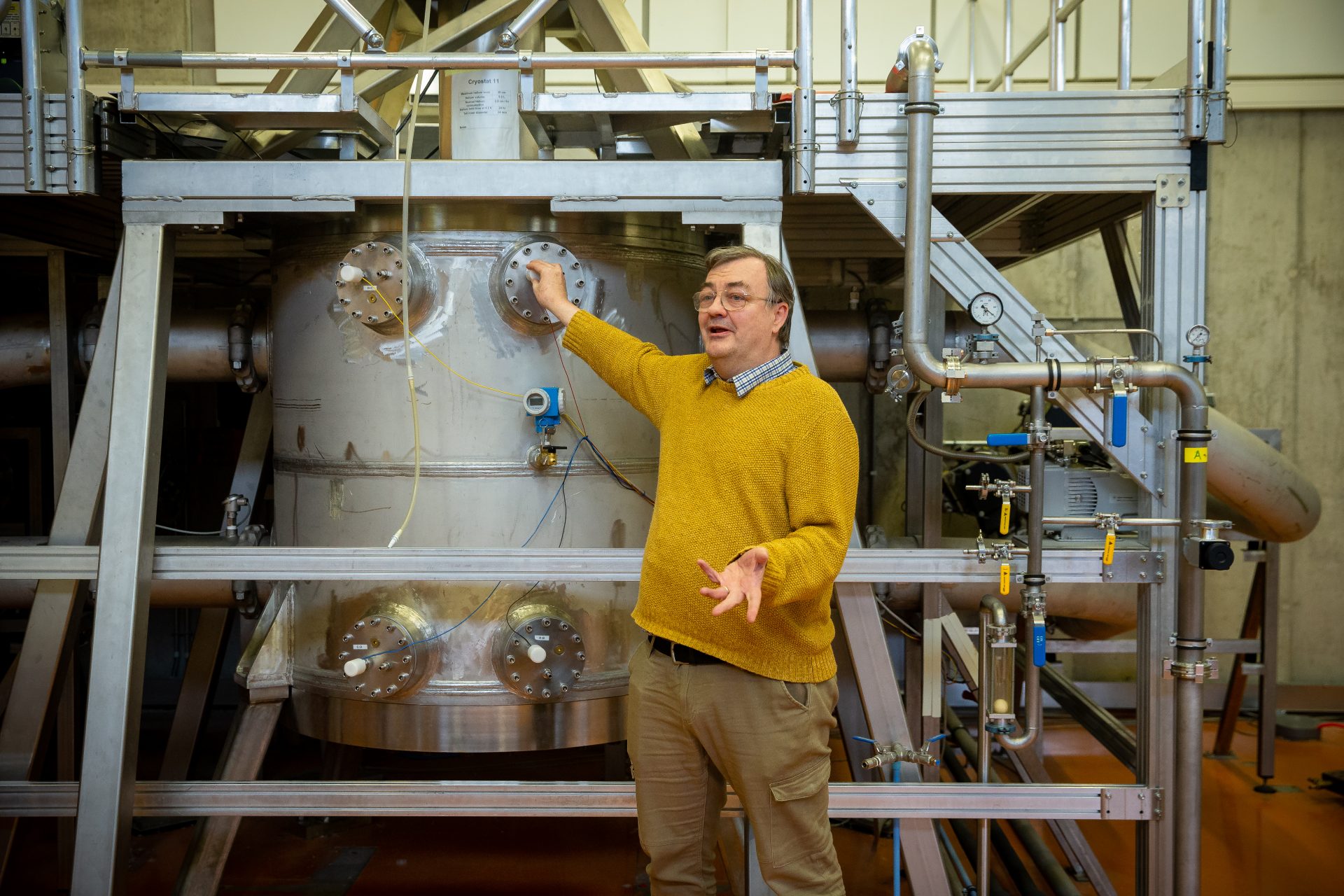
Zeitler starts with the basics: you can make a magnet by electrifying a spool. The more power that goes through the spool, the greater the magnetic field. One significant downside to this is that the spool will begin heating up and will start melting at a certain point. Additionally, a major force arises when creating a magnetic field, called the Lorentz force: the force of the electrical current in a magnet is so powerful that the material itself breaks down.
While Zeitler is lecturing, the lab’s director is keeping an eye on us reporters. ‘Are you still keeping up?’, Redlich asks.
Zeitler continues without issue: someone called Francis Bitter found a solution to the problem. He developed a spool with tiny holes in it, through which water can flow to cool down the magnet. The large magnets in the HFML lab use that technique: water goes into the magnet at 10 degrees Celsius, and comes out at a balmy 40-45 degrees. Zeitler: ‘Among other things, we use that water to heat the Huygens building, but that’s a different story (see insert, ed.).’
And then we come face to face with the lab’s crown jewel: a magnet with a 38 tesla force. For a brief moment in 2014, this was the most powerful magnet in the world. But not for long, Zeitler says, looking somewhat downcast: Chinese scientists developed a more powerful magnet a month later; right now, the most powerful magnet is in Tallahassee.
Superconducting
Zeitler then talks about a different kind of magnet: a superconductor. These are materials that can hold a current without any resistance, meaning no power is lost. That sounds good, but for the moment the technique only works on conventional superconductors at temperatures near absolute zero – negative 270 degrees Celsius- and in magnetic fields of at most 20 tesla.
What’s more interesting, according to Zeitler, is that you can connect both kinds of magnets. That is exactly what the magnetic lab is currently working on: connecting a regular 33 tesla magnet with a superconducting magnet of 12 tesla. This should lead to a 45 tesla magnet – equal to the world record for this type of magnet. If it succeeds, that offers a lot of possibilities for research into materials: the stronger the magnet, the greater the effects that can be studied.
That’s all well and good, but how does that help us?
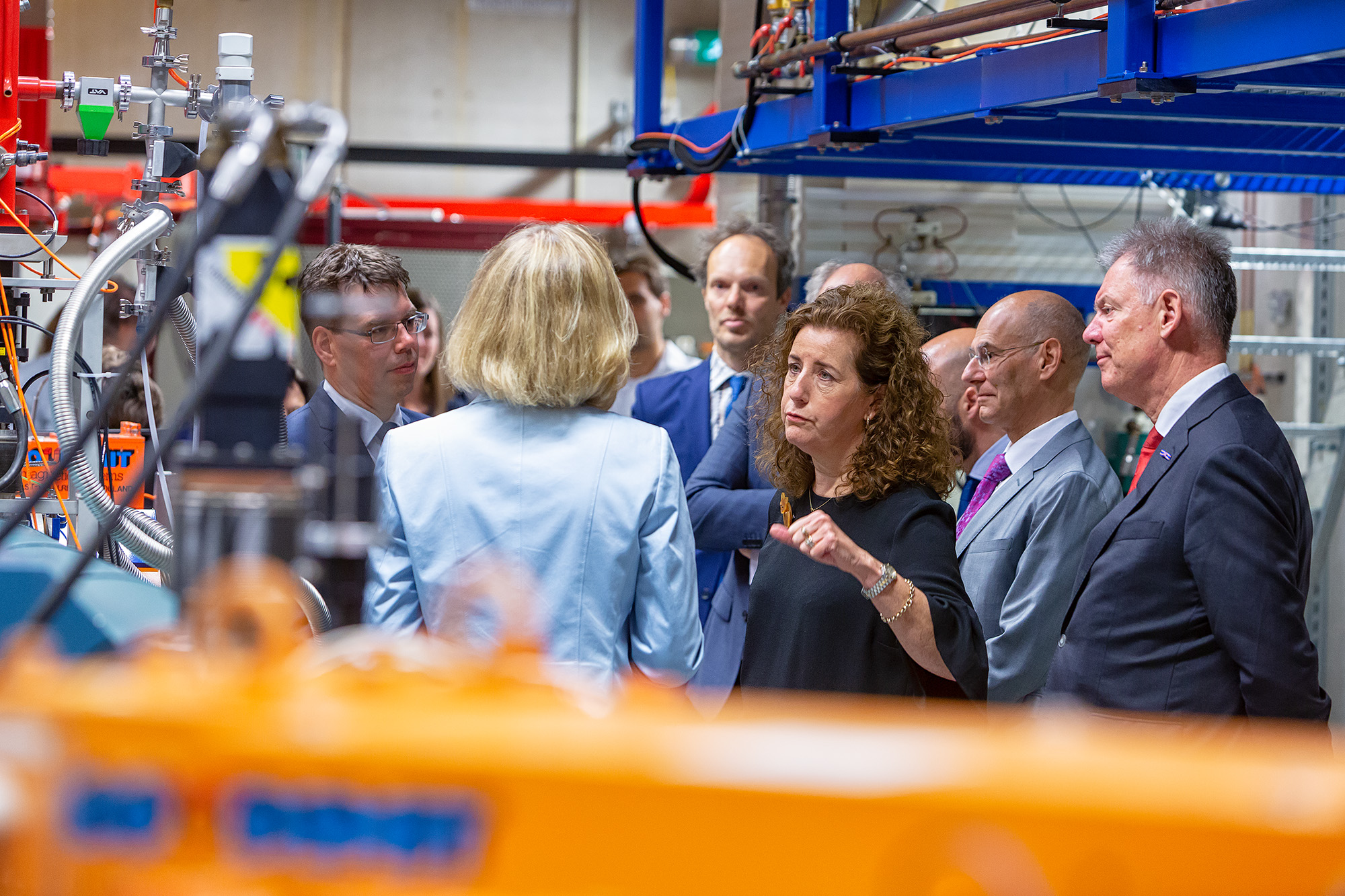
Zeitler holds off at first. ‘We don’t know beforehand why we do things, we just try to understand materials’, he says. The professor wants to champion fundamental research: knowledge for knowledge’s sake, without immediately considering potential applications. ‘We should actually first try to understand how magnets work’, he says. ‘Because even after a hundred years of research at the molecular level, we’re still not entirely sure. Once we’ve figured that out, it’s sure to come with a host of applications.’
But he does want to try to answer the journalist’s questions. ‘The transistors you can now find in every cell phone, were preceded by forty years of fundamental research. If you want to build maglev trains, electric engines, or electric cars, you need powerful magnets.’
Chips
We’ve already entered a new room in the meantime. It’s unclear what floor we’ve landed on – the lab has so many stairs, hallways, and doors, that it’s very easy to get lost.
‘Half of all chips break down. That’s normal in fundamental research’
Zeitler introduces us to postdoc Oleksandr Zheliuk. He’s researching new materials for half conductors, which might have applications for computer chips in the long term. He can find out if the chips work by putting the materials in a hole of one cubic centimetre in the middle of the magnet using a stick. ‘Half of all chips break down’, Ziegler explains. ‘That’s normal in fundamental research.’
The postdoc explains the intent of his research: to develop a standard for electronic devices in the half conductor industry. ‘Cell phones need a certain amount of resistance’, he explains. ‘If that resistance is a few per cent too high or too low, the phone has trouble working. That is why we need standardisation.’
Heel stick
The tour is almost over, and we find ourselves back in FELIX – one floor above the lasers. The rattling machines everywhere make the lab very noisy. Jos Oomens, professor in Molecular Structure and Dynamics, takes us to a small room with several mass spectrometers. These are used to analyse complex mixtures like blood, urine, or drugs. Oomens wants to know what molecules these mixtures are made of.
That is very interesting to know, Oomens says while balancing a molecule toy on his fingers. A mass spectrometer is very accurate when it comes to mass, but the instrument cannot explain how atoms fit together, nor can it reveal the exact structure of the molecules. That is why Oomen also uses the FELIX lasers. By using the infrared spectra of the laser, Oomens can find out what the mixtures are made of.
Before we can even ask about practical applications, Oomens tells us about a study of metabolic diseases he is conducting together with the Radboudumc. The goal of the study is to find out which substances in a patient’s blood or urine can point to the presence of certain diseases. In the Netherlands, the heel stick test is used to screen infants for twenty different diseases, while there are at least 1500 of those kinds of diseases; the exact composition of all those diseases is unknown. Oomen’s research will soon add one more disease to the list of known ones: ODE, Pyridoxine-Dependent-Epilepsy. ‘If you know of the disease at birth, you can immediately start treating it.’
Data centres
We’re speechless, not for the first time during this tour; something Redlich did not fail to notice. ‘Today, we wanted to show you that we have very diverse kinds of research’, she says. ‘From trying to pin down superconducting to practical applications like this.’
‘In the future, we may help make data centres more energy efficient’
Redlich calls it the core strength of her research institute: playing to societal developments. The director likes to think big. ‘Perhaps, in the future, we may be able to help with CO2 storage or making data centres more energy efficient.’
Two hours after the start of the tour, we’re back outside. The contrast with the activity within the famous laboratory is striking. The sun, the clouds, the trees of Brakkenstein. More than ever, we are aware that everything is made up of molecules. And if there’s any place where they can find out the molecular structure, it’s in the building behind us.
Energy costs
The magnets of the HFML lab cost a lot of energy. Was that an issue in these days of soaring energy costs? ‘We are a part of the deals that Radboud University makes about buying energy’, managing director Femke Tabak explains. ‘They use centralised purchasing, but for many labs the energy costs are indeed quite troublesome.’
Like any other European laboratory, HFML-FELIX tries to anticipate the ups and downs in the energy grid due to solar- and wind power. ‘Power used to be cheaper at night, but that’s different nowadays’, Redlich says. ‘That calls for adaptation, but it can make a difference in the total usage. Additionally, not all of our energy is lost: through heat storage we help heat the Huygens building.’
Translated by Jasper Pesch.
